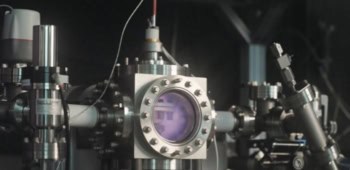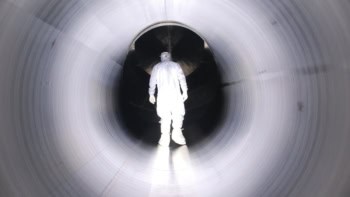Fusion: A Voyage Through the Plasma Universe
Hans Wilhelmsson
2000 Institute of Physics Publishing 192pp £21.95/$35.00hb
One of the standing jokes that those of us who work on fusion have to suffer every now and then from other physicists is that the best-conserved time invariant in physics is the time to achieve a controlled and sustainable fusion reaction. And certainly that prospect is still at least 25 years away, which only goes to prove the optimism of researchers in the field, who have continually been able to convince politicians that fusion is worth funding from the public purse. More importantly, the fact that controlled fusion is still so distant highlights the difficulty of the problem to be solved.
Despite the sarcasm, nations all over the world continue to dedicate important resources to harness on Earth the source of energy that is more common than any other in the universe – nuclear fusion. Such stubbornness is only justified given the promised land that fusion offers: namely a virtually inexhaustible source of energy that is safe and environmentally friendly. And the compelling evidence is that we are very close to the goal.
Some 675 million Joules of energy have already been obtained via the Tokamak experiment at the Joint European Torus lab in the UK from fusion reactions between deuterium and tritium nuclei. And the International Thermonuclear Experimental Reactor (ITER) – an engineering design of a device that could deliver 400 Megawatts of fusion power over a period of 10 minutes – is almost ready, waiting only for the appropriate authorities to give its construction the green light. ITER will prove beyond any doubt the scientific and technical feasibility of harnessing fusion reactions as a source of energy.
These and numerous other experiments around the world have now proved that all of the parameters of a plasma that are needed to achieve fusion – including density, temperature, confinement time and pressure – are practically possible, even if those parameters have yet to be obtained together at the same time. That task is impossible to fulfil with current devices, and will require a next-generation fusion device, such as ITER.
With fusion as the focus to this book, Hans Wilhelmsson from the Chalmers University of Technology in Sweden invites us to go on a fascinating tour of the universe to see for ourselves just how valid is his claim that “99% of known matter [in the universe] is in a plasma state”. Starting in our own atmosphere, we pass through the magnetosphere and on to the Sun, from where we are taken to distant supernovae, pulsars and quasars. Along the way we learn in an entertaining fashion the strong links between phenomena that naturally occur in plasmas in the universe and those produced in fusion reactors.
Having heard many fusion scientists say how much researchers in these two fields could learn from each other – without either side actually doing much about the problem – Wilhelmsson’s book provides a good opportunity for both communities to strengthen their links. The book even suggests, using several good examples, the most straightforward issues of common interest where the benefit of closer ties would be immediate.
Wilhelmsson is a theorist, and the mind of a theorist clearly surfaces in the section that is entitled “fusion on Earth”, which covers plasma modelling, waves and instabilities, nonlinear effects and turbulence. However, at this particular stop on the journey through the universe, where the author discusses “inertial-confinement fusion” – in which lasers or magnetic fields are used to confine the fusion material – I feel he should have mentioned the defence applications of the Mégajoule laser-fusion project. After all, in 1995 after the end of French nuclear explosions at Mururoa in the Pacific Ocean, it was President Jacques Chirac himself who said that the construction of the huge Mégajoule laser laboratory in Bordeaux would make such tests a thing of the past.
Another slight criticism is that the author passes perhaps too quickly and superficially through the technical applications of plasmas by scientists on Earth. Having said that, it may be that the author’s approach makes sense because his journey takes us to some of the furthest reaches of the universe, which does not leave him with much time to dwell on such simple Earthling problems.
Although “plasma physics is a comparatively young science”, as the author points out, it already has a history that people like Wilhelmsson have a duty to tell younger generations about. I therefore greatly enjoyed the fact that he includes various personal reminiscences and descriptions of his interactions with many well known physicists over the years, including several Nobel-prize winners. For example, he tells how the Russian physicist Piotr Kapitza, who won the Nobel prize for his work on low-temperature physics, spoke enthusiastically in his Nobel lecture on fusion. These intelligent anecdotes make the book a pleasure to read. I also enjoyed the classic papers by Hannes Alfvén, Stig Lungquist, Subrahmanyan Chandrasekhar and Enrico Fermi that appear in the appendices.
“When the game comes to an end,” concludes the author about the future of fusion, “the benefits will be enormous and Nature will help to provide a peaceful source of energy as it has done for eternity in the rest of the universe.” Let us hope that one day that vision is indeed reached.



